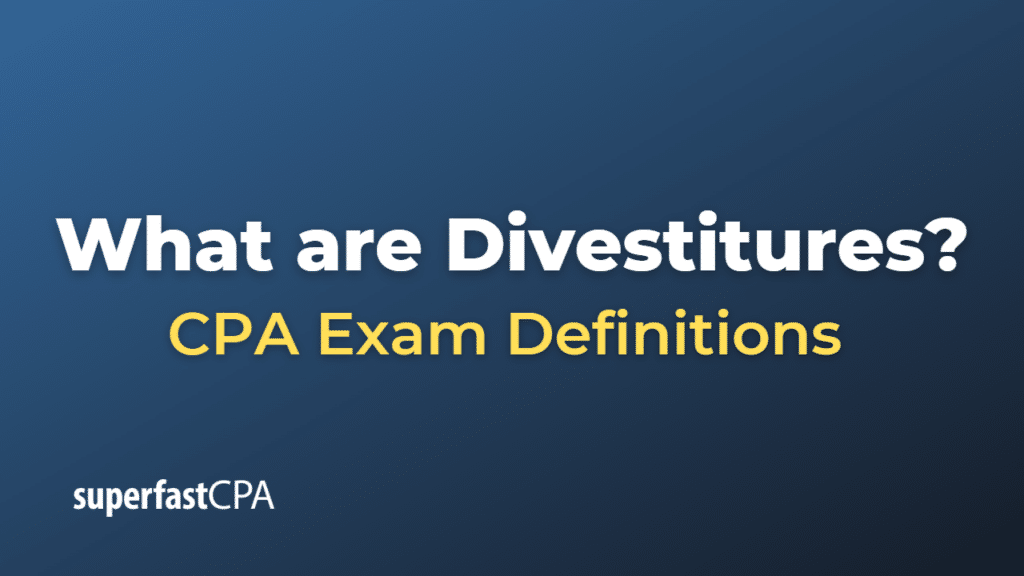Divestitures
Divestiture is the process of selling or liquidating an asset or subsidiary of a company. This business strategy is often used when a company decides that a particular asset, division, or subsidiary is not aligned with its long-term goals or is underperforming.
There are several ways a divestiture can occur, including:
- Selling or Liquidating: This involves selling the asset, business unit, or subsidiary to another party. The proceeds from the sale can then be used for other corporate purposes such as paying down debt, reinvesting in core business areas, or returning capital to shareholders.
- spin-offs: In a spin-off, a company creates a new, independent company out of a subsidiary or division. The shares of the new company are then distributed to the existing shareholders of the parent company.
- Carve-outs : This is similar to a spin-off, but instead of distributing shares to existing shareholders, the shares of the new company are offered to the public through an initial public offering (IPO).
- equity Carve-outs: This is where a company sells a percentage of the equity of a subsidiary to outside investors, reducing its ownership stake but typically maintaining controlling interest.
Divestitures can have several benefits, such as raising capital, refocusing on core business areas, reducing complexity, or divesting underperforming assets. However, they also require careful planning and execution, as they can be complex and potentially disruptive to the business.
Example of Divestitures
Let’s say a large multinational conglomerate, “Global Corp,” operates in various sectors including technology, healthcare, energy, and food & beverage. Over time, Global Corp’s management realizes that their food & beverage division isn’t performing as well as the other divisions and is not aligned with their long-term strategic goals. Therefore, they decide to divest this division.
Global Corp could proceed in several ways:
- Sell the Division: They might sell the food & beverage division to another company interested in that industry. The sale would likely include the physical assets, the brand, intellectual property, and potentially even the staff of the division.
- Spin-off: Alternatively, they could turn the food & beverage division into a standalone company and distribute its shares to the current shareholders of Global Corp. Each shareholder of Global Corp would then also become a shareholder in the new food & beverage company.
- Carve-out: Another option could be to create a separate company from the food & beverage division and then sell a portion of that company’s shares to the public through an initial public offering (IPO).
Each of these scenarios represents a different kind of divestiture. In each case, Global Corp would be getting rid of an asset (the food & beverage division) that they no longer see as beneficial to their overall corporate strategy.
In the real world, some famous examples of divestitures include when eBay divested Skype, selling it to Microsoft, and when Pfizer spun off its animal health business into a new company, Zoetis.













